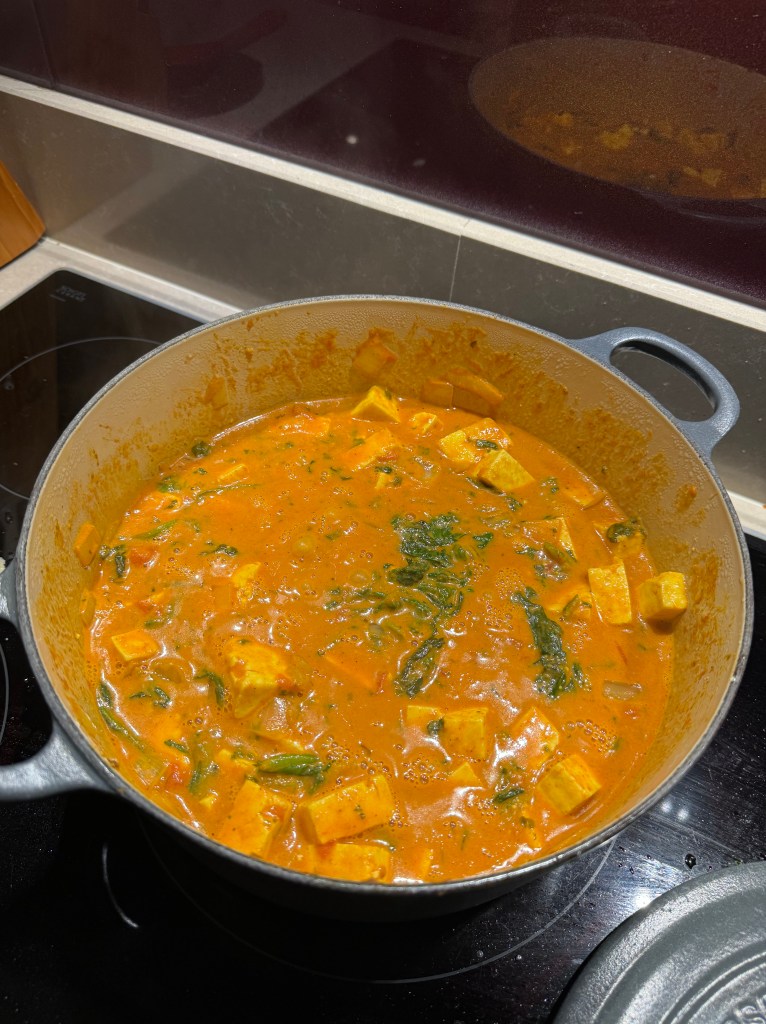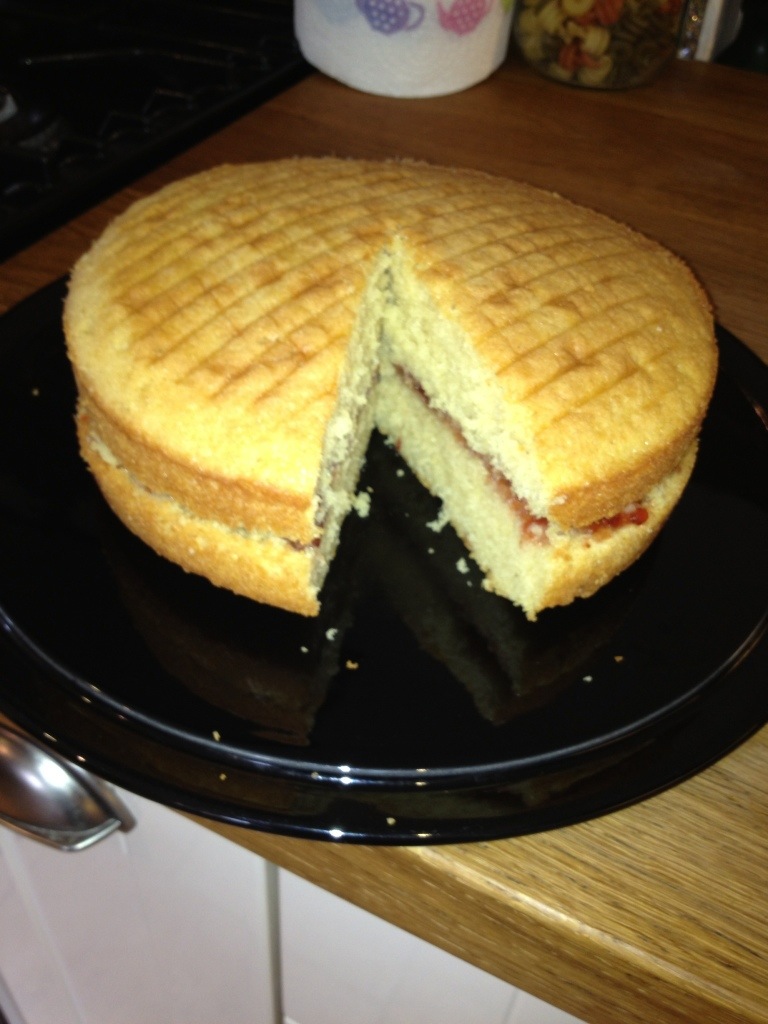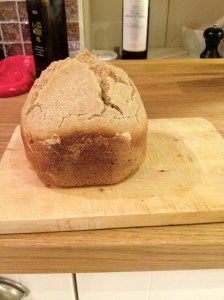A generous four portions!

Ingredients:
One tablespoon of coconut oil
One block of Costco paneer, cut into cubes (or two blocks of standard supermarket size)
One onion, diced
Two cloves of garlic, squished
Four tablespoons (or to taste) of curry paste (korma is nice – make sure it’s a paste, not a jar of sauce(
One tin of tomatoes
One tin of coconut cream
Spinach (one tin, or about 8 frozen blocks, or about a metric tonne of fresh spinach -if using fresh I recommend pre-cooking and squeezing out some of the water so that your curry is not too saucy)
Any other veg you fancy
Method:
Over a medium heat, gently cook the onions. Add the paneer and stir – be careful it doesn’t stick. Stir through the curry paste and cook for a few mins. Add the garlic. Throw in your tomatoes and coconut cream, then the spinach. Leave to simmer gently for 10-15 minutes to reduce a bit.
Serve over rice or with fresh chapatis (or both).
(Chapatis are really easy: Chapatis recipe | BBC Good Food)






